The 4th Pure Data Convention, Bauhaus Universitat, Weimar
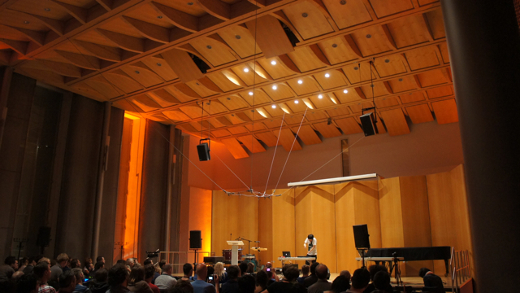
Chikashi Miyama | Black Vox
[The post has been UPDATED with a live recording of Music for Flesh II]
The Pure Data Convention is one of the best community led event I ever took part in. I’m not sure whether is the laid back attitude shared by the participants, or the excitement of showing and learning all the diverse things Pd can be used for, however the Pure Data meetings are something unique. The cloud of knowledge, techniques, good conversations and ideas that floats around the heads of the delegates is pretty special and cozy.
This year the fourth Pd Convention was organized by our friends and Pd developers Max Neupert and Bjorn Lindig, along with a team of colleagues from the Bauhaus Universitat in Weimar. I was honoured and thrilled to present the Xth Sense interactive system to the community, and eventually I had the chance to teach a workshop, give a lecture on the latest findings and perform the solo piece Music for Flesh II.
The workshop was quite fast, but we had the chance to get our hands dirty with some custom electronics and Pure Data programming for interactive, biophysical music; some pictures below.
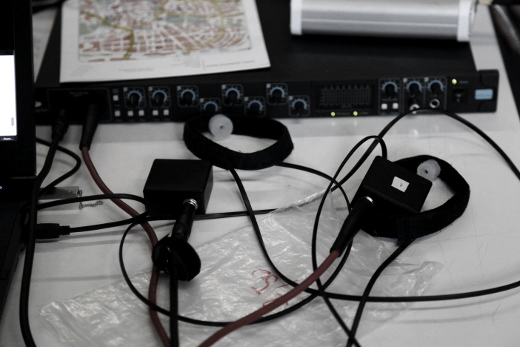
The Xth Sense biophysical sensors
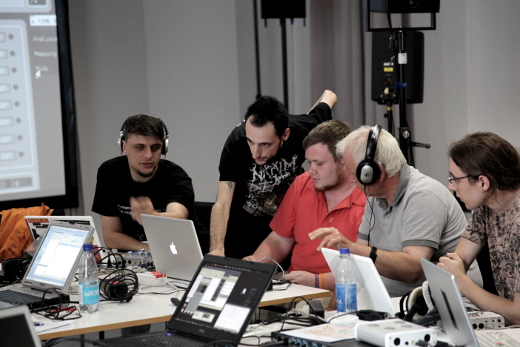
Designing sound gestures for the Xth Sense system
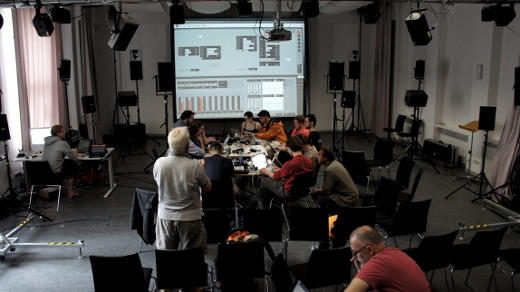
A ridiculous amount of speakers at the awesome Seam Studio.
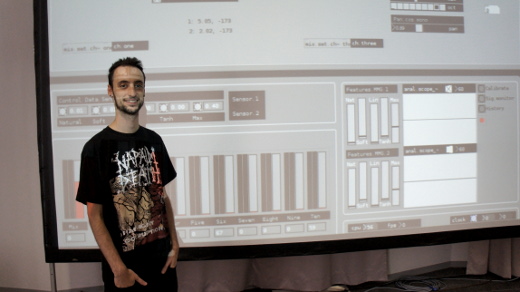
A nerd and its child.
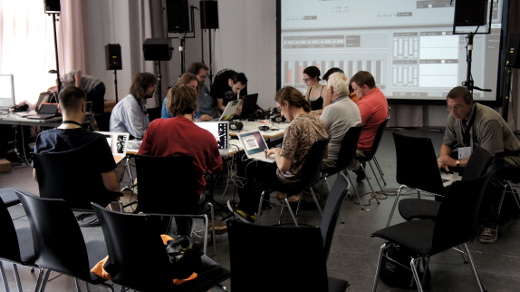
Full immersion, last hours of the course.
Personally it was a great experience as I collected some inspiring feedback and constructive critics about the whole XS project. Namely, I had wonderful conversations with friends Ricardo Palmieri and Richard Graham, that are both working on some highly recommended Pd-based projects. With Ricardo we have been considering a different standard for the production process of the XS sensors, while with Richard we discussed about the use of multiple subwoofers, the more effective impact of whole-body movements to both the sonic outcome and the audience perception, and the mediation between primal muscle sound and its computational mediation.
The latter topic is as tricky as stimulating; recently I’ve been thinking about this quite a lot, and if on one hand there is not an ultimate solution as we deal with the subjectivity of a musical aesthetic, on the other, this aspect of the research is crucial, for a deeper musical analysis could sharpen the timbrical characteristics of the XS as a musical instrument.
It is often very hard for me to be completely satisfied of a performance, but I can say the concert at the Seam Studio in Weimar was perhaps one of the best so far. Probably due to the swift anxiety of performing before the ears of my peers and colleagues, my concentration was fairly strong, and while playing I think I almost entered a trance. For the first time since March I spontaneously moved the whole body, rather than individual limbs; such a somatic behaviour triggered sound forms that I never heard before and playing the piece was far more enjoyable than usual. As simple as it gets, in contrast with single limbs contractions, whole body movements involve the excitation of a greater part of the body; thus many more oscillations are generated and the whole network of muscular tissues is excited. Sonically, this is translated in a faster dynamic and richer texture.
Here you can listen to a live recording of the piece.
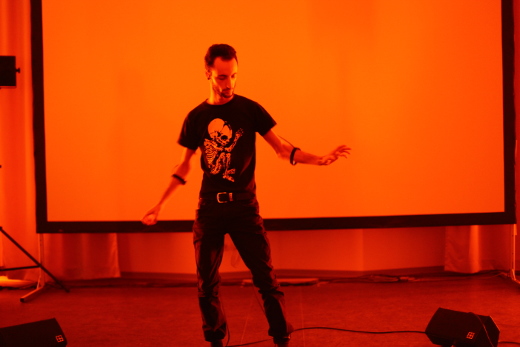
Marco Donnarumma | Music for Flesh II
The concerts program was excellent; the fourth PdCon gathered some of my favourite Pd musicians, such as Koray Tahiroğlu, Richard Graham, Chikashi Miyama (pictured at the top of the page), CHDH, Oscar Martin and Alexandre Porres. We also had an amazing exhibition, more workshops and a round table with a virtual Miller Puckette, who participated in streaming from the US. Check the program on-line to get a glimpse of the tight schedule.
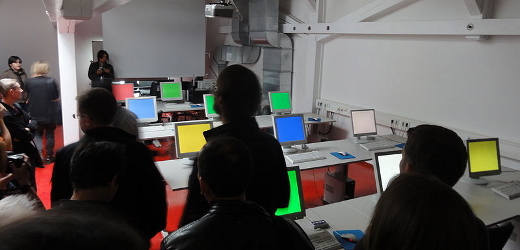
Giuliano Obici | Lanhouse Concert
Of course, I’m not forgetting about the papers; being that there were too many lectures, and the sessions were split in two rooms running at the same time I could not attend all of the presentations. However, it is hard to say which ones were the most interesting, because the diversity of the contents presented at the Convention is always so great to be almost overwhelming. If you wish to stay up to date with the latest developments of our community, you are only one click away.
A big thanks to the organization and to all the delegates that made this Convention another unforgettable one. A special thanks to Cyrille Henry, who provided us with some insights on the pmpd, a library for physical modelling and the use of shaders in GEM. Most likely I’ll be working with these tools soon for a new audiovisual performance.
All pictures are courtesy of the 4th PdCon.


